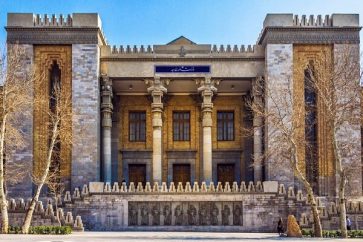Head of the Atomic Energy Organization of Iran (AEOI) says 17,000 megawatts of nuclear power will join the country’s national grid in the next 20 years.
Iran’s sole nuclear power plant is on the country’s southwest coast in Bushehr. Its 1,000-megawatt reactor was built by Russia and officially handed over in September 2013 after years of delay.
Russian and Iranian firms started work on two additional 1,000-megawatt reactors in 2016, with construction expected to take 10 years.
AEOI head Mohammad Eslami said in the southwestern Iranian city of Abadan Monday that the operation the Bushehr nuclear power plant has saved 80 million barrels of oil so far.
“Generating electricity from nuclear power plants has greatly contributed to easing the country’s electricity shortage,” he said.
The US provided Iran with its first nuclear reactor and fuel before the Islamic Revolution in 1979 when the country was a close ally of Washington. The 5-megawatt light water research reactor, used for production of radioisotopes for medical and agricultural purposes, is still in operation at Tehran University.
Under then President Dwight Eisenhower’s Atoms for Peace program, the United States also planned to provide Iran with peaceful, civilian nuclear technologies and help it generate nuclear power.
That plan and similar projects by Western companies were put on hold by the US and its allies after the Islamic Revolution, and Iran’s quest to revive the country’s nuclear energy program ran into fierce opposition by the West and its politicization of the effort.
Construction of two pressurized water nuclear reactors in Bushehr began in 1974 with the help of German contractor Siemens and French scientists. The Bushehr I reactor was 85 percent complete and the Bushehr II reactor was partially complete prior to the 1979 Islamic Revolution.
With the fall of the shah in the revolution, the project was halted. The site was then damaged during the 1980-88 war of the former Iraqi dictator Saddam Hussein on Iran.
The project was later revived with Russian help but construction ran into repeated delays. Finally, Iran’s first nuclear power plant was hooked up to the national grid on Sept. 3, 2011.
Iran has said it wants to build a network of nuclear power plants with a capacity of 20,000 megawatts to enable it to export more of its bountiful oil and gas.
Eslami said development of power generation capacities at nuclear plants is one of the goals of the new Iranian government, with the Darkhovin site being considered for the purpose with the aim of easing the country’s electricity shortage.
“Today, the cleanest, most stable, most reliable and most economical power generation capacity in the world is the use of nuclear power plants,” he said, citing Leader of the Islamic Revolution Ayatollah Seyyed Ali Khamenei’s guidelines in this regard.
“According to the Eminent Leader’s emphasis on the production of 17,000 MW of electricity in the country through nuclear energy, the production of 10,000 MW was envisaged in the 1401 budget, which was fortunately approved” by the parliament, Eslami said, referring to Iran’s new fiscal that starts on March 20.
Earlier this month, the European Union said it will need to invest 500 billion euros ($568 billion) in new generation nuclear power stations from now until 2050.
“Existing nuclear plants alone will need 50 billion euros of investment from now until 2030. And new generation ones will need 500 billion!” EU internal market commissioner Thierry Breton told the Journal du Dimanche newspaper.
Source: Iranian media (edited by Al-Manar English Website)




